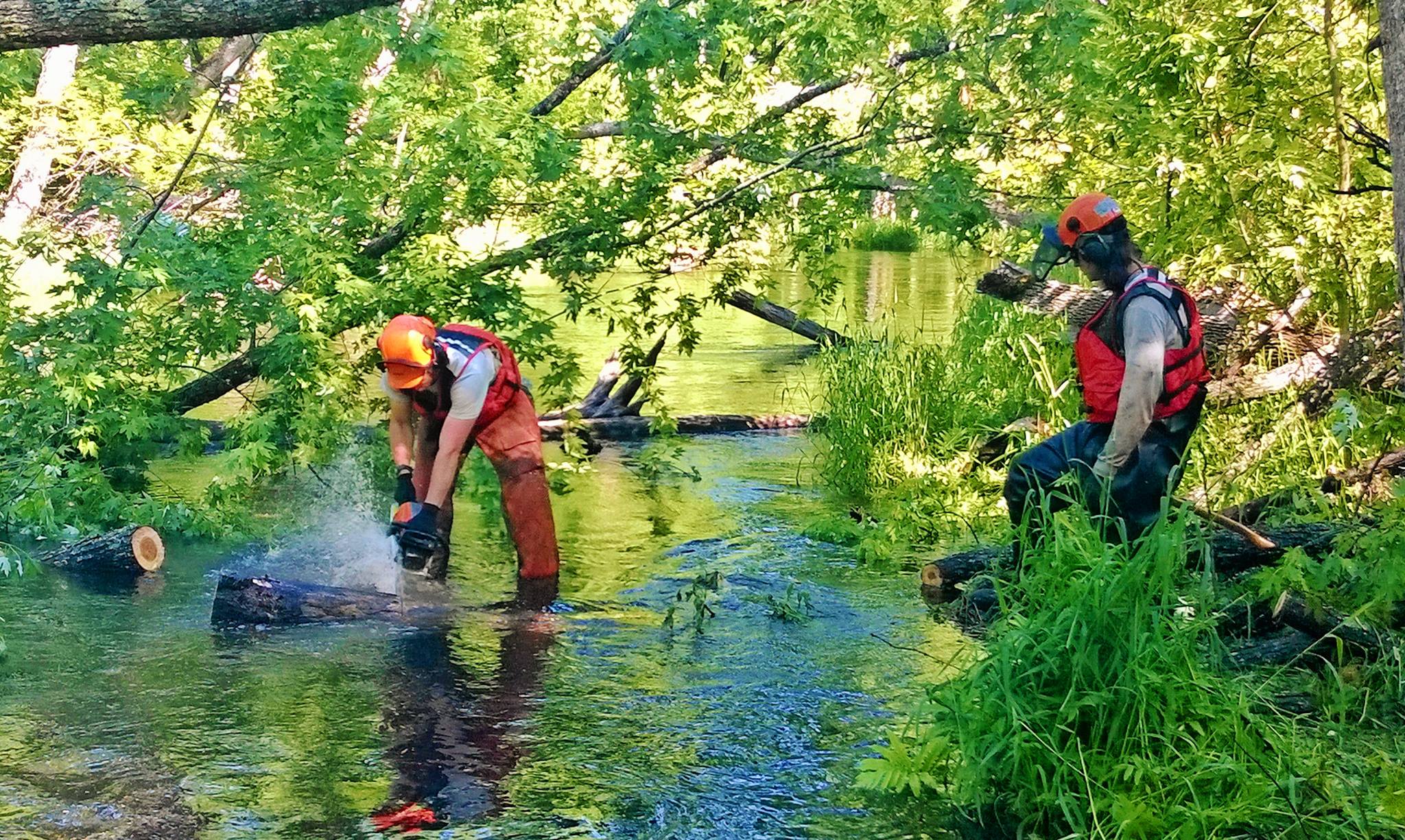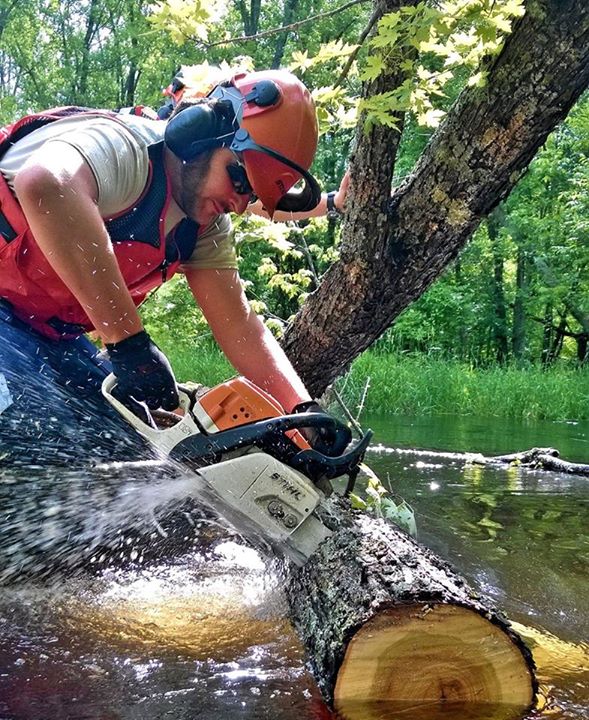Working with water trails


By: Sawyer Denning
Photo credits: Will Jacques
Earlier this year in mid-June, half of the North Woods crew—myself, Will and Nate—helped the Water Trails crew for a week in clearing a portion of the Mississippi River near Bemidji of fallen trees. South of Lake Irving, a stretch of river about three miles long running through the woods was unnavigable.
After unloading a jon boat from a trailer at an access point on the north side of Lake Irving, we packed in our gear: chainsaws, gasoline, bar and chain oil—a biodegradable type for use in water—hand saws, loppers, helmets, chaps, a saw box with tools for maintenance and repair, and our lunches. We followed the Water Trails crew across the lake into a marshy area where the river began. The forest around us soon became thick, and soon we spotted the first tree lying across the river. We agreed with the Water Trails crew to observe them working on a tree to learn, then we would go down the river and work ahead of them, after they would leap-frog ahead of us.

For larger trees that blocked the entire river, both of our crews worked together. We started by cutting branches on one side until only the trunk remained, then slicing the trunk into logs. Cut material was dragged onto land on either side of the river. Around the first tree we cut, ferns and hazel grew densely in the understory of the marshy forest. Everything was a vibrant green, almost glowing in the refracted sunlight.
“I didn’t realize there was a jungle in Bemidji.” I said to Will while tossing a branch into the woods.
Sawing in the river was different than on land. First, because the physics were different. There was less friction: sawing into a tree pulled the boat forward, or pushed it back if we were sawing from underneath. So whoever was at the boat’s tiller needed to compensate for the sawyer’s action. The direction and speed of the river’s current also factored into the work. We also had to consider the people behind the saw, since the chain would rip through the water, spraying it backward some distance.
Each fallen tree and the varied terrain of the river gave our crew a new problem to solve. The work was engaging. I commented to the Water Trails crew that this was a nice change of pace from the monotony of invasive species removal. One of them replied that it was nice this time of year, but early and late in the season the weather and water is very cold, and they’d rather be working dry when temperatures were near freezing. I also imagined that the river work can become monotonous if we were doing it all year.
By the end of the week, we cleared the forested section of the river of all trees and our crew had a new skill and experience with chainsaw work.